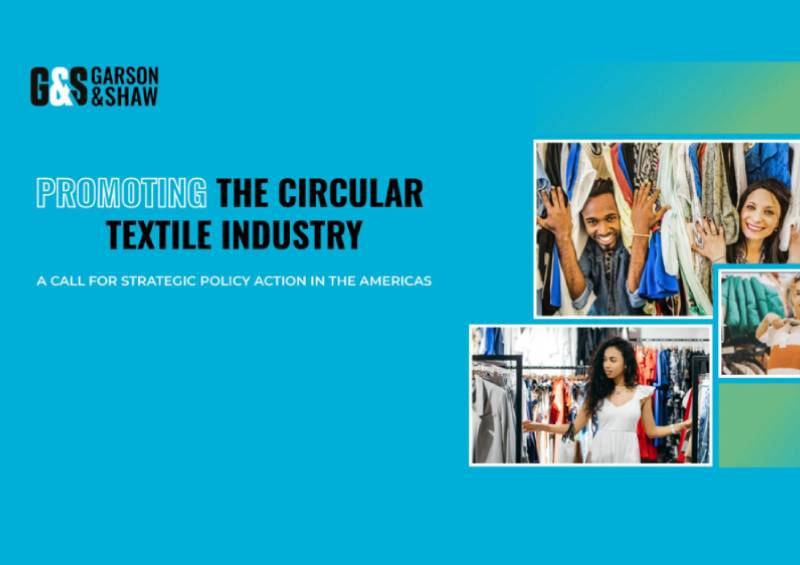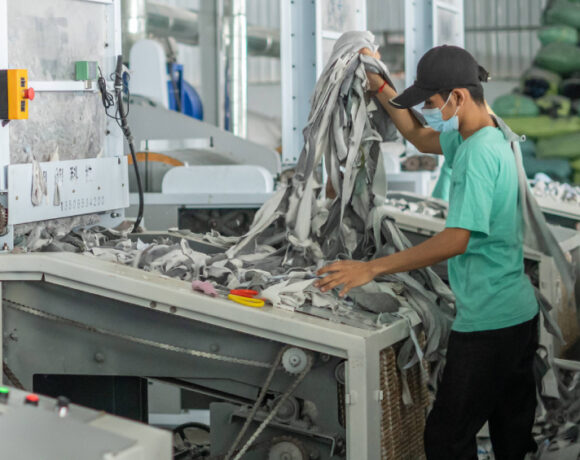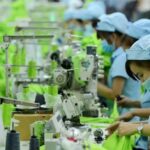Garson & Shaw Report Calls For Transformative Shift Towards Circular Economy In Textile Industry

In a bid to address the mounting environmental challenges posed by the textile industry, the 2024 Garson & Shaw report highlights the critical need for substantial changes. The report highlights the burgeoning market for used textiles and the pivotal role of circularity in mitigating environmental impact.
The textile industry’s rapid growth is paralleled by escalating environmental concerns. Current consumption trends, if not altered, could lead to a drastic increase in carbon emissions. The report reveals that reducing new clothing production could cut carbon emissions by millions of metric tonnes, akin to removing millions of gasoline-powered cars from the roads annually. However, the reality is stark: millions of tonnes of wearable clothing are discarded each year, primarily ending up in landfills or incinerators.
The average American owns 16 unworn clothing items, totaling approximately 1.4 billion unworn items nationwide. Reducing new clothing production could save around 13 trillion gallons of water over the next decade, equivalent to the volume of 20 million Olympic swimming pools.
Highlighting reuse as the most effective strategy, the report calls for a shift from producing new textiles to reusing existing ones. This shift not only reduces waste but also conserves vital resources required for new clothing production. Textiles are the fastest-growing source of waste in many industrialized economies. The average garment is worn 36% fewer times now compared to 15 years ago, contributing to increased waste.
Achieving circularity involves enhancing the collection, sorting and recycling of used clothing. This approach can significantly diminish waste and environmental degradation while fostering economic sustainability. Reuse should be prioritized over recycling due to its lower environmental impact. Increased political and financial support is necessary to build the required infrastructure for a circular economy in textiles. Collaboration across the value chain, from retailers to recyclers, is essential for scaling circular practices.
While the used clothing industry presents significant economic opportunities, challenges such as the declining quality of fast fashion garments must be addressed. Despite these challenges, the resale apparel market is projected to grow from US$ 96 billion in 2023 to US$ 218 billion by 2030, driven by strong consumer support for sustainable fashion.
The report stresses the importance of international trade in used clothing, especially for emerging economies. It argues against restricting the movement of used textiles, highlighting their crucial role in providing affordable clothing and supporting livelihoods. Governments should implement supportive policies and incentives to promote circularity in the textile industry. Investments in technology and infrastructure are critical for improving sorting and recycling processes. Consumer education on the benefits of sustainable fashion can drive demand for reused and recycled clothing.
The report calls for a transformative shift towards a circular economy in the textile industry. This shift requires coordinated efforts from governments, industry stakeholders and consumers to achieve long-term sustainability goals. By prioritizing clothing reuse and supporting circular infrastructure, the industry can significantly reduce its environmental impact and pave the way for a more sustainable future.















